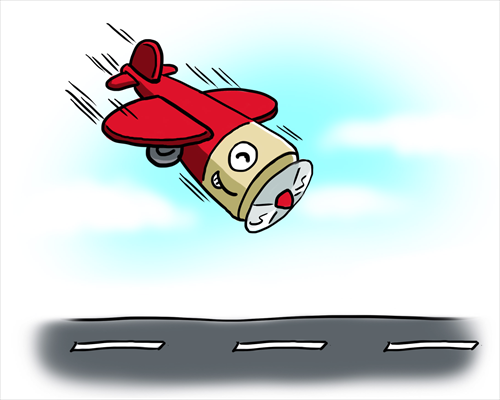Slowdown underscores reform challenges

Illustration: Liu Rui/GT
There is great concern today over the Chinese economy. After 30 years of 10 percent growth, gains in real GDP have slowed to 7 percent. Many fear this is but a hint of a far more serious endgame - the dreaded hard landing, or even worse. Are these fears well founded?
The simple answer is "no." The Chinese economy is in the middle of a long-awaited and welcome slowdown. To be sure, this slowdown is a delicate operation. It reflects the interplay of two sets of forces, those stemming from the deliberate efforts to restructure and rebalance the Chinese economy and those arising from unexpected developments at home and abroad. The challenge for China and its leaders is to walk the fine line between these forces without suffering a major economic accident.
History underscores the daunting nature of this challenge. China's per capita GDP crossed the $12,000 threshold in purchasing power parity terms in 2014, nearing the zone when economic development is often arrested by the dreaded "middle income trap." The slowdown to 7 percent growth, coupled with widespread concerns over China's debt problem, property market excesses, and shadow banking risks, only underscores the mounting perils of just such a trap.
The good news is that China takes such risks very seriously and has the strategy, the commitment and the tools to avoid such a dire endgame. In early 2007, when the Chinese growth model seemed all but invincible, former premier Wen Jiabao warned that an economy beneath the surface was increasingly "unstable, unbalanced, uncoordinated, and ultimately unsustainable."
This critique triggered intense internal debate over China's economic strategy. With the enactment of the 12th Five-year Plan in early 2011, the decision was made to change the growth model, shifting the structure of the Chinese economy away from manufacturing-led export and investment growth toward services-led growth and internal private consumption.
The new plan provided a coherent framework to enable this transformation: more job creation through development of an embryonic services sector, higher real wages via urbanization, and a reduction of fear-driven precautionary saving by building a secure social safety net.
The results were mixed. While there was encouraging impetus to services and urbanization, little progress was made on the safety net front. The enrollment in healthcare and retirement programs was expanded, but the funding of benefits was woefully inadequate.
That shortcoming is now being addressed by the reforms of the Third Plenum of the 18th Central Committee of the Communist Party of China in November 2013, especially those pertaining to the one-child family planning policy, the household registration (hukou) system, ceilings on deposit interest rates, and, most recently, deposit insurance for Chinese savers.
At the same time, the government has addressed the safety net funding issue by proposing to raise taxes on State-owned enterprises from 15 to 30 percent by 2020 and earmarking the proceeds of such newfound revenue toward social security.
China's slowdown needs to be seen in the context of all these developments. The downshift to 7 percent GDP growth is actually an important step in the right direction. That's because it reflects a shift in the mix of GDP toward labor-intensive services. In 2013, services rose to 46 percent of Chinese GDP. Moreover, with services requiring 30 percent more workers per unit of Chinese output than manufacturing and construction, the increasingly labor-intensive mix of the economy is a very encouraging development. Significantly, it means that services-led China can now hit its employment, or labor absorption, objectives with much slower GDP growth.
While this is the right strategy for China at the right point in time, the November 21 easing of monetary policy indicates that Beijing is not taking success for granted. The Chinese leadership seems to be drawing a line in the sand at 7 percent GDP growth. A serious breach of that threshold could heighten fears that a weakened economy might not be able to withstand the further pressures that reforms will undoubtedly spawn.
Fortunately, there is still ample scope for further policy easing should circumstances dictate. The last thing China needs would be to backtrack on the transformational reforms, which are now under way. Ironically, that would be just the recipe for the hard landing that so many fears are now in the offing.
The author is a faculty member at Yale University and former Chairman of Morgan Stanley Asia. opinion@globaltimes.com.cn